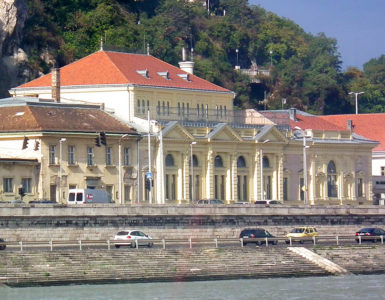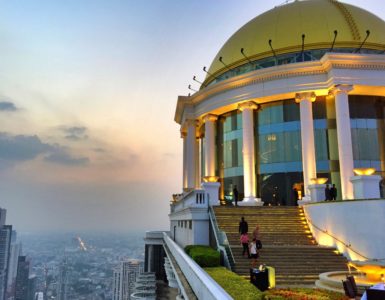Our last day in Chiang Rai, we hire Geng, our favorite driver, to take us out to the Black Temple.
While Clyde and I have visited the White Temple twice, we have never laid eyes on — or heard of! — artist Thawan Duchanee’s Baan Dam, a controversial work of art that is as earthy and raw as the White Temple is elegant and sublime.
Locals are quick to point out that the Baan Dam is *not* a temple (the name, in fact, translates more properly to “Black House”), but, for better or for worse, this work has become positioned as the White Temple’s polar opposite.
And so it is. At the White Temple, the walls gleam like polished alabaster; at the Black Temple, the teakwood walls, ceilings, and floors have been blackened by fire. At the White Temple, precise curves are edged in mirror tile; at the Black Temple, jagged edges are likely to be lined with bones and teeth and claws.
At the White Temple, you cross a bridge from hell and enter heaven, where the Buddha awaits. At the Black Temple, you cross from the garden of heaven and enter hell, where the empty throne — a massive edifice made of sea shells, broken bones, animal teeth, and dried skins — is waiting for someone to return … but that someone will *not* be a beaming, beatific Buddha.
The compound contains dozens of black houses. In one, chairs of bone are drawn up around a dinner table of charred wood. In another, a massive bed, adorned with the horns of bulls and oxen, sits in the center of a circle of spiny, skeletal chairs. (There is a feeling here that a performance is about to begin, but the mind shies away from what kind of performance that might be, and why an audience is required.)
Each of the tiny rooms is so packed with diabolical furnishings, humans can barely squeak past — which underscores, I think, the fact that these houses were not made for humans, unless the humans in question are being brought in for sport.
All of this darkness is set in a verdant, carefully-tended, and exquisitely beautiful garden, which has been done, I think, to amplify the darkness the rooms themselves exude. As you tour each unit, you catch yourself holding your breath, drawing in, constricting; as you exit, you relax … but only until the next house appears.
We left amused, perplexed, unnerved, delighted. Having experienced both, I can honestly say I prefer my temples White … but, as the Black House makes clear, darkness has its charms, as well.



Add comment